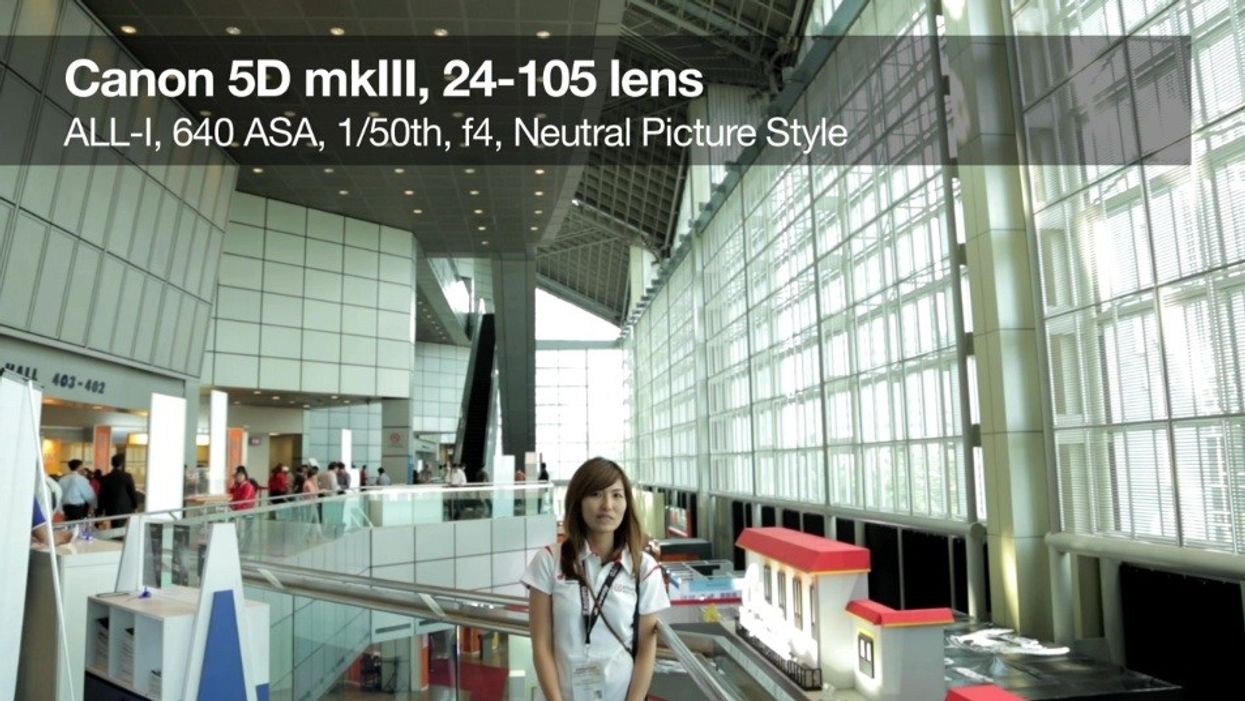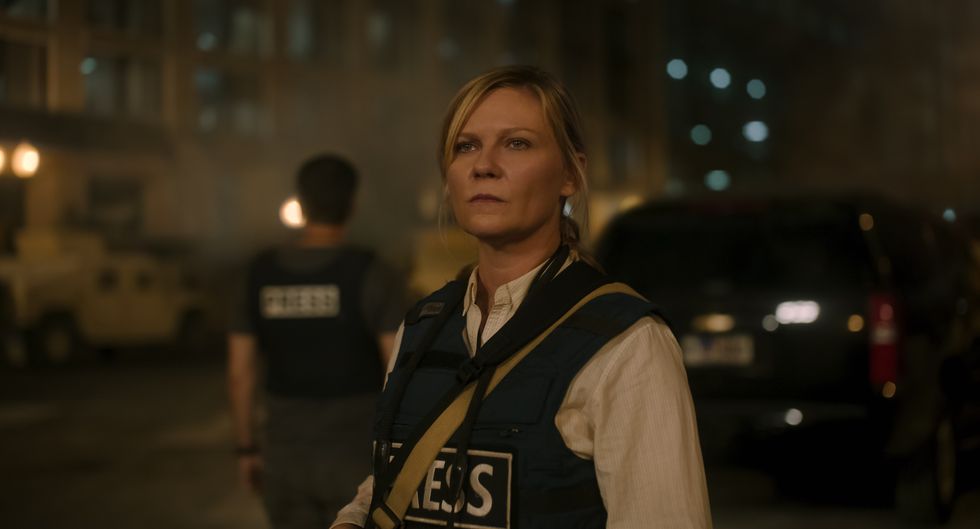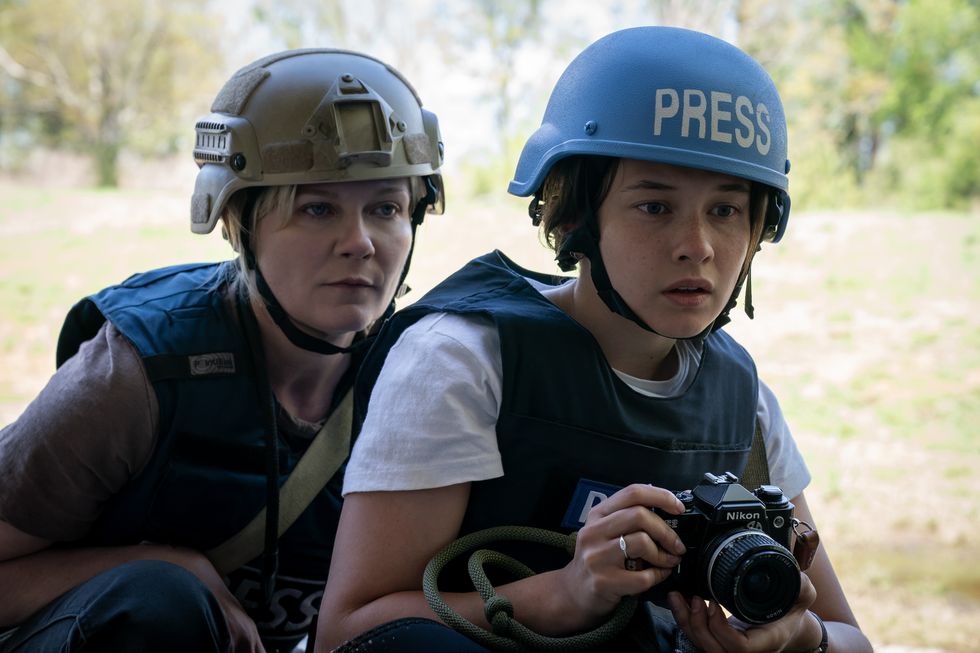Canon Improves Video Resolution with the 1D X, but is It Better Than the Mark III?

We've been having a discussion about downscaling in another thread about a Canon DSLR (the T4i to be exact), and today we've finally got a sample video from the Canon 1D X that seems to show the camera out-resolving the 5D Mark III. Though the 1D X was announced back in October 2011, it may very well be October 2012 before these finally get out in the open in real numbers. It was common knowledge that the launch was going to be a "paper" announcement only, but the 1D X has missed its delivery date numerous times. Either way, the camera is going to be released sooner rather than later, and while its price point is well out of the reach of many readers ($6,800), it looks like all that extra horsepower under the hood gives it a bit more resolution in video mode than the other new full frame Canon camera, the 5D Mark III.
Dan Chung over at DSLR News Shooter took this comparison between the 1D X and the Mark III, using the exact same lens and the same camera settings. It is available for download, so if you'd like to see it in full resolution, head on over to Vimeo and download it:
I've taken some still frames at 100% and compared them below. The 5D Mark III is first followed by the 1D X:

So why does this camera have better downscaling than the Mark III or any of the other Canon DSLRs? For one thing, lower megapixels (18 vs. 22) means that there is less information that must be thrown away to get to 1080p (which is only 2 megapixels). It also has an additional processing core within the imaging pipeline. The reason it can take so many still images per second is because the processors are built to handle that speed and the CMOS sensor has a quicker read-reset rate. The side effect of this, is that video quality can be improved. The video in the 1D X didn't necessarily have to be as good as it is, but this camera was also being developed as a video camera, and it shares practically everything with the twice as expensive 1D C. It's unclear which came first, but it's likely that the stills camera came first, and they realized that the internals could probably handle 4K video.
This camera is now up there with the big boys, and it's got the full frame look that many desire -- the only problem is that it's missing a lot of the features that many would be willing to pay a higher price for. Not to pick on Canon here, but they are taking advantage of the fact that video people pay more for their products than photographers. How this camera can go from $6,800 to $15,000 with the addition of a single codec (4K MJPEG) and some additional crop modes is clear evidence Canon understands that there are users who will pay more because they trust the brand. You could argue that Canon is intentionally pricing the 1D C where they are so that they can recoup the R&D costs, but if that were the case, they would have been pricing their still photography products a lot higher over the years.
Canon still doesn't have a line that competes with Sony at similar price levels. This camera should really be competing with the FS100, but it's another $1,800 more expensive. Some people might find that the full frame sensor is worth that additional price, but it's a simple fact that Canon has nothing below the 1D X that really compares with the FS100 in features and image quality (the quality of the Mark III is debatable compared to the FS100). The 1D C is really getting into Scarlet territory in price. While a base Scarlet package is upwards of $15,000, it's a far more fully featured camera than the 1D C.
Canon is a well-respected company that makes a lot of good products. I personally have owned cameras from every company out there, and I've never had a problem with any of them. Unfortunately, Canon has seemingly left behind the very people who made their large sensor cameras so popular. Their mindset is one of intentional crippling. Make the lower-end product less featured so that people will be forced to spend more money. Many companies practice this -- Sony could very easily have put their 50mbps 4:2:2 XDCAM codec inside the FS100 and the F3 (as well as the FS700), but they too are trying to differentiate their product lines.
Whether the other Canon DSLRs are capable of higher resolution is unclear, but what is clear is that other companies are not afraid to release products at lower prices with a tremendous amount of features. To paraphrase Steve Jobs: if you don't cannibalize your own products, somebody else will. Blackmagic will begin releasing the Cinema Camera in about a month, and since they don't have a higher-end product, there's nothing to cannibalize. Real 1080p, RAW, ProRes, and DNxHD internally. The best that Sony, Panasonic, Nikon and Canon can do for $5,000 or less is 28mbps AVCHD internally (with the exception of Canon's ALL-I variable codec -- which has some undesirable shadow noise at times). The Japanese companies have been notoriously slow to innovate, and they tend to release incremental updates.
Companies like RED and Blackmagic have been pushing the boundaries not only in specs, but in price (lower). If the Japanese companies want to compete at the lower level, they need to start increasing their specs relative to the cost of the cameras. Blackmagic is just beginning, and they certainly won't be the last non-camera company to build one. I also think we will see more cameras like the Digital Bolex -- made by people who love cameras and want to see better quality at an affordable price. There are plenty of other companies that build hardware solutions -- and the only thing they're missing is the sensor (and there are plenty of inexpensive options out there at the Micro 4/3s size or smaller). The next year is going to be extremely interesting, and I wouldn't be surprised come NAB to see a brand new affordable camera from a company that's never made one before.
[via DSLR News Shooter]



















